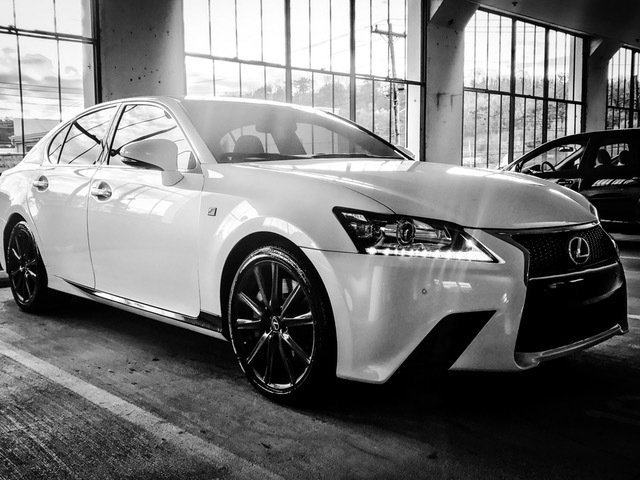
If you are like most people shopping for a new car, safety ranks high among things you're looking for. Every new car must meet certain federal safety standards, but that doesn’t mean that all cars are equally safe. There are still important safety differences, and some vehicles are safer than others. Many automakers offer safety features beyond the required federal minimums. The following safety features should be considered when purchasing a car:
- Crashworthiness These features reduce the risk of death or serious injury when a crash occurs.
- Vehicle structural design A good structural design has a strong occupant compartment, known as the safety cage, as well as front and rear ends designed to buckle and bend in a crash to absorb the force of the crash. These crush zones should keep damage away from the safety cage because once the cage starts to collapse, the likelihood of injury increases rapidly.
- Vehicle size and weight The laws of physics dictate that larger and heavier cars are safer than lighter and smaller ones. Small cars have twice as many occupant deaths each year as large cars. In crashes involving smaller and larger vehicles, heavier vehicles drive lighter ones backwards, decreasing the forces inside the heavier car and increasing them in the lighter car.
- Restraint systems Belts, airbags and head restraints all work together with a vehicle’s structure to protect people in serious crashes. Lap/shoulder belts hold you in place, reducing the chance you’ll slam into something hard or get ejected from the crashing vehicle. If you aren’t belted, you’ll continue moving forward until something suddenly stops you—often a hard interior surface that will cause injuries.
- Shoulder belts are on inertia reels that allow upper body movement during normal driving, but lock during hard braking or in a crash. Belt webbing is stored on the reel, and during a frontal crash any slack in the webbing can allow some forward movement of your upper body. Then you could strike the steering wheel, dashboard or windshield. This problem is addressed in some cars with belt crash tensioners that activate early in a collision to reel in belt slack and prevent some of the forward movement.
- Airbags and lap/shoulder belts together are very effective. However in some circumstances, a deploying airbag can cause serious injuries and even death. The greatest risk of injury occurs when you are on top of, or very close to an airbag when it starts to inflate. Choose a car that allows you to reach the gas and brake pedals comfortably without sitting too close to the steering wheel. Some cars offer telescoping steering column adjustments that may help.
- Side airbags are designed principally to protect your chest. They may also keep your head from hitting interior or intruding structures.
- Head restraints are required in the front seats of all new passenger cars to keep your head from being snapped back, injuring your neck in a rear-end crash. But there are big differences among head restraints. Some are adjustable, and others are fixed. They also vary in height and how far they are set back from the head. To prevent neck injury, a head restraint has to be directly behind and close to the back of your head. Look for cars that have this type of restraint. If the restraints are adjustable, make sure they can be locked into place. Some don’t lock, so they can get pushed down in a crash.
- Anti-lock brakes When you brake hard with conventional brakes, the wheels may lock and cause skidding and a lack of control. Anti-lock brakes pump brakes automatically many times a second to prevent lockup and allow you to keep control of the car. If you were trained to brake gently on slippery roads or pump your brakes to avoid a skid, you may have to unlearn these habits and use hard, continuous pressure to activate your antilock brakes. Anti-lock brakes may help you keep steering control, but they won’t necessarily help you stop more quickly.
- Daytime running lights Daytime running lights are activated by the ignition switch. They are typically high-beam headlights at reduced intensity or low-beam lights at full or reduced power. By increasing the contrast between a vehicle and its backgrounds and making the vehicles more visible to oncoming drivers, these lights can prevent daytime accidents.
- On the road experience Other design characteristics can influence injury risk on the road. Some small utility vehicles and pickups are prone to rolling over. "High performance" cars typically have higher-than-average death rates because drivers are tempted to use excessive speed. Combining a young driver and a high-performance car can be particularly dangerous.
Contact Us
If you live in Oregon or Washington contact us, Fox Insurance Agency. As an independent agency, we can provide quotes for auto insurance, homeowners insurance, and other insurance products from several highly regarded, nationally known insurers. Call today. We are always ready to discuss your insurance, and are happy to help you find coverage that suits your needs. Contact Fox Insurance today 503-277-2300.
The information in this article was obtained from various sources and is not all inclusive regarding the subject matter. This content is offered for educational purposes only and does not represent contractual agreements, nor is it intended to replace manuals or instructions provided by the manufacturer or the advice of a qualified professional. The definitions, terms and coverage in a given policy may be different than those suggested here and such policy will be governed by the language contained therein. No warranty or appropriateness for a specific purpose is expressed or implied. Content provided by Insurance Information Institute.

